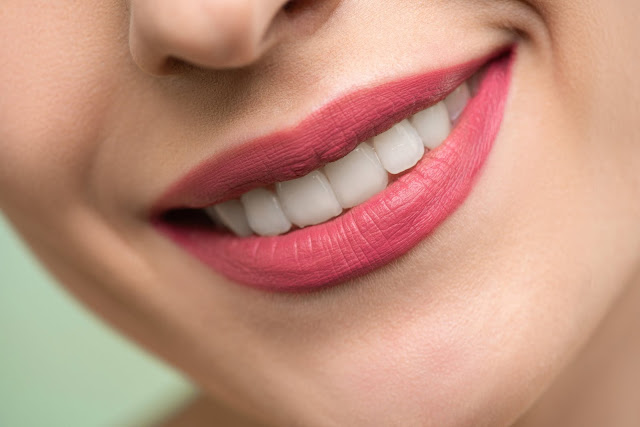Ah, well, that really depends on your own preferences and the advice you get from your dental health care provider, like this dentist within Niles. We wouldn’t presume to shove your free will in a commercial mold. Instead, today we are going to cover the different choices that exist out there when it comes to making your smile straight again.
 |
| Should You Choose Invisalign To Fix Crooked Teeth? [ image: pexels.com by leonardo benone ] |
In our quest to get
all verified and useful information on this important subject, we consulted a
few friends from The Dental Room. If you’d like, feel free to chat with them
yourself or cross-check their input with your own chosen dentist. Well, here we
go!
When it comes to
fixing crooked teeth, we tend to think of it as a children’s problem, something
affecting our little ones and maybe our teenagers. And this is true in a way –
teeth deformities are definitely not an overnight occurrence; they start
relatively early. That’s why it is so important t treat them early too. The
sooner, the better.
However, this issue
is also present in the adult population, and over the past several years there
has been a steadily growing number of grown-up people looking for ways to
tackle it. Forget the shame of clunky braces, people want healthy, properly
aligned teeth! And science is delivering.
Although there are
tons upon tons of various products out on the market to help with the matter,
at the end of the day they can be classified into two primary categories:
permanent and removable teeth straightening solutions. Let’s take a look at
each in turn.
Unremovable option:
the traditional braces
This is the most
well-known and most dreaded solution: plain old metal braces. They look ugly
like they bet on it, they are often deemed uncomfortable – and they are still
around. There is a good reason for that: these unsightly contraptions are
actually insanely effective. Metal braces can help with fixing overbites,
underbites, crowding, crookedness, and excessive spacing of the teeth. You can
learn more about how they work their amazing magic in this informative article.
What most people
don’t know about them, though, is that there are several sub-types of these
teeth correctors. So let’s list them all here.
Metal braces are the
ones we think about as per default. This is the metal “fence” around the teeth,
which features wires, and has rubber bands holding them in place. Damon types,
or self-ligating as they are also called, are pretty similar to the traditional
metal kind. The chief difference is that the wire is held by a sliding device.
Clear braces are made
of ceramics, not metal. They can be either completely clear, or colored
specifically to blend in with your teeth. And finally, the lingual ones are
attached form the opposite side: onto the back of a person’s mouth, instead of
onto the front. You won’t find that last option everywhere, though.
 |
| [ image: pexels.com by shiny diamond ] |
The single largest
benefit of unremovable bracer types is that they truly are very versatile in
their application. They can help remedy or even remove several different kinds
of problems. Most people hate them, though, because of their single biggest
detriment which is their visibility.
The vast majority of
these fixtures are very much visible whenever you open your mouth, and people
tend to feel that this completely ruins their aesthetic. In fact, many fear
being ridiculed for them, and this is a serious concern among adults and children
alike. It has even warranted scientific study, and you can find an example at
this link:
https://www.researchgate.net/publication/51866359_Bullying_in_orthodontic_patients_and_its_relationship_to_malocclusion_self-esteem_and_oral_health-related_quality_of_life#read
Two more major downsides are that, firstly, these are fixed: you don’t get to
remove them until your treatment is done, no matter how much they bother you.
The treatment itself
is comparably slow, taking anywhere from half a year to two entire years to
yield satisfactory results. And secondly, they will possibly require some
lifestyle changes. You will need to learn new brushing and flossing techniques
to make sure you give both your teeth and your braces proper maintenance, and
you may be also required to make some changes to your diet.
Removable option:
clear braces and clear aligners
Now, here is where our title question comes into play. Invisalign popped up in the market around 23 years ago, and it was a pioneer: the first transparent teeth correction aligner. Since that time, a lot of others have emerged as well, and “Invisalign” sort of became a general term rather than just a single brand. With so many different traditional braces alternatives, you need to ensure that you pick the best option that is most suitable for you.
These “invisibles”
are thin plastic appliances which are custom made for each patient. An imprint
of their teeth is taken (either by taking a mold or by using a scanner to come
up with a 3D image). The imprint is used as a base for making the brace or
aligner in a laboratory. When applied to teeth, they expose them to steady
pressure, gently forcing them back into their proper place over time.
How much time, you
might wonder? The average answer is anything from ten weeks (so, roughly, two
and a half months) to two entire years. This varies wildly from patient to
patient as it directly depends on that person’s particular condition, its
nature and severity, and how well their crooked teeth adapt. Sometimes it might
be necessary to employ metal braces as preparation before switching over to the
plastic alternative.
Clear braces and
aligners have a great many benefits. For starters, there’s the financial
aspect. If you are dealing with only a mild or moderate dental misalignment,
they will be enough and you won’t need classic braces, thus saving a lot of
money. You don’t have to spend nearly as much time with your dentist, and they
are removable, so meals and hygiene are made far less inconvenient.
On the flipside, because you can remove them, you can also lose them, which is neither fun nor cheap. Always keep track of where you put them down! Also, if you don’t fill the daily wearing quota of 20-22 hours, you will get no result.

No comments:
Post a Comment
Please Leave a Comment to show some Love ~ Thanks